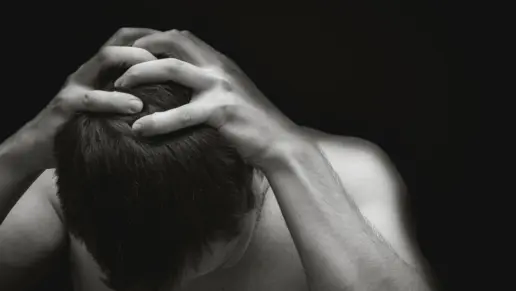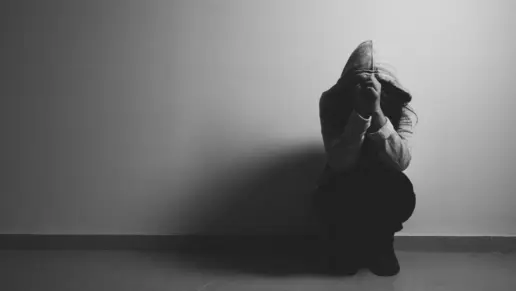PTSD and drug and alcohol addiction are often linked. Due to the nature of these mental health conditions, people often battle both at once, as co-occurring disorders. To effectively treat PTSD and addiction, it’s important to understand each disorder and how they interact.
Defining Post-Traumatic Stress Disorder (PTSD)
Post-traumatic stress disorder (PTSD) is a mental health condition that is caused by experiencing or witnessing a disturbing event.1 This disorder may emerge after a person experiences:
Serious accidents and injury
Natural disasters
Acts of terrorism
Physical or sexual assault
Death of a loved one
Military combat
While many people who go through such traumas do not develop PTSD, a significant portion of the population struggles with this disorder. About 6% of the U.S. population will be diagnosed with the disorder at some point in their lives. In 2020, around 13 million Americans had PTSD.2
Looking at Co-Occurring Addiction and PTSD
When we look at the numbers for PTSD and addiction as co-occurring disorders, the stats are much higher. Approximately 46% of individuals with lifetime PTSD also have a substance use disorder.4 A study of Vietnam Veterans found that 74% of vets with PTSD also had a substance use disorder.4
Why are PTSD and addiction so often co-occurring disorders? Both affect brain chemistry, and they tend to feed off each other. After experiencing a traumatic event, the brain produces fewer “happy chemicals,” known as endorphins. Substances such as alcohol and other drugs increase endorphin levels. So, to find relief from low feelings such as depression and anxiety, people with PTSD may turn to substances.
The substances further alter brain chemistry, and, over time, the person becomes dependent on the substances both physically and psychologically. They become caught in a cycle of experiencing bouts of PTSD symptoms, which they try to self-medicate with substances, which only makes symptoms worse and causes other issues.
Coping with insomnia is one example of how this dual diagnosis cycle often works. A person with PTSD may have trouble falling asleep, so they self-medicate with drugs or alcohol to try to sleep. But the substances alter their quality of sleep, and they end up feeling even less rested. This type of cycle creates the co-occurring disorders of PTSD and addiction.
Veterans and Co-Occurring Disorders
Veterans are one of the most prevalent groups that develop PTSD and addiction as co-occurring disorders.
Almost 1 out of every 3 Veterans seeking treatment for SUD also has PTSD.3 This population is at higher risk due to their increased exposure to traumatic events. Many veterans have experienced combat, and many suffer from harsh demands and conditions as well as the challenge of being away from home and family. All these experiences make it common for veterans to develop PTSD, which can then lead to addiction.
What Are the Signs and Symptoms of PTSD?
Symptoms of PTSD often start within one month of the triggering event. However, it is possible for symptoms to first appear years after the trauma occurred. Symptoms fall into four categories.1 The severity and occurrence of these symptoms can be different for each person, and they can vary over time.
Intrusive Memories
A person with PTSD may have flashbacks. During these episodes, they relive the traumatic event as if it were happening right then. Intrusive memories can also occur as dreams or nightmares or recurrent, upsetting memories during day-to-day life.
Avoidance
Examples of this symptom include avoiding people or places that might make the person think about the triggering event. The person may also try to avoid all thoughts and conversations about the event.
Negative Changes in Thinking and Mood
If a person is experiencing PTSD, they may feel hopelessness about the future, feel detached from friends and family, or have a lack of interest in things they enjoyed before the traumatic event occurred. They may also suffer from memory problems and find it hard to express positive feelings.
Changes in Physical and Emotional Reactions
These changes may involve irritability, guilt, shame, aggressive behavior, self-destructive behavior, or being easily startled. PTSD can also cause concentration issues and insomnia.
How Are Addiction and PTSD Treated as Co-Occurring Disorders?
When a person experiences co-occurring disorders, the conditions must be treated at the same time. Both PTSD and addiction impact the brain in complex ways. They also feed off each other and interact on multiple levels. Because of this interaction, it is important to treat the co-occurring disorders simultaneously, focusing on undoing the damage both have caused physically, to the brain, and emotionally, to behavior.
Dual-diagnosis treatment for PTSD and addiction typically involves a combination of trauma-focused psychotherapies and pharmacological treatments. Research shows that the use of these treatments in conjunction with evidence-based substance use disorder treatments can be effective to address co-occurring disorders.4
Several medications for PTSD have been shown to be effective in these integrated treatments:
- Selective serotonin reuptake inhibitors (SSRI) have been combined with substance use disorder treatment as an effective strategy.4
- Naltrexone, an opioid antagonist used in the treatment of alcohol use disorder, has shown some success in dual-diagnosis treatment.
- Prazosin has also demonstrated effectiveness in reducing PTSD symptoms and alcohol consumption.5
These medications are often combined with evidence-based trauma-focused PTSD treatment such as Cognitive Processing Therapy (CPT), Prolonged Exposure (PE), and Eye Movement Desensitization and Reprocessing (EMDR).3
The most effective strategies include evidence-based treatment for both co-occurring disorders. This typically includes relapse prevention and cognitive behavioral therapy to address the substance use disorder, along with trauma-focused PTSD treatment, and medication that may address both disorders.4
Finding the right dual-diagnosis program can make a significant difference in recovery. If you’re comparing treatment options or need help locating support near you, you can learn more about rehab options and explore facilities experienced in treating PTSD and substance use disorders.
Addiction Centers That Treat Dual Diagnosis
Finding facilities near you…
Resources
- Post-traumatic stress disorder (PTSD) – Symptoms and causes. (2022, December 13). www.mayoclinic.org.
- How Common Is PTSD in Adults? (2014). U.S. Department of Veteran Affairs. www.ptsd.va.gov
- Substance Abuse in Veterans – PTSD. (2014). U.S. Department of Veteran Affairs www.ptsd.va.gov
- Treatment of Co-Occurring PTSD and Substance Use Disorder in VA – PTSD. (2014). U.S. Department of Veteran Affairs. www.ptsd.va.gov
- Flanagan, J. C., Korte, K. J., Killeen, T. K., & Back, S. E. (2016). Concurrent treatment of substance use and PTSD. Current Psychiatry Reports, 18(8). https://doi.org/10.1007/s11920-016-0709-y





